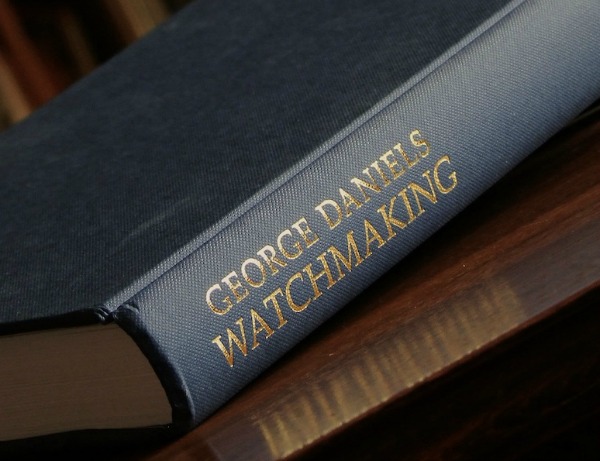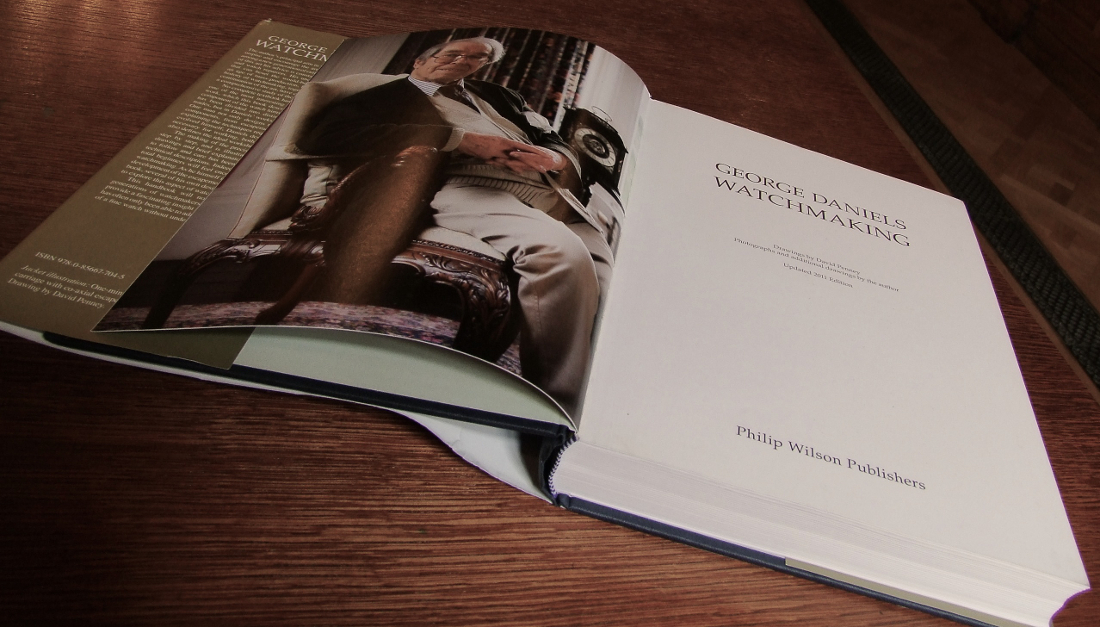George Daniels is regarded as one of the greatest watchmakers of all time and his work has its deserved place in watchmaking history amongst the finest and most influential. One of his greatest accomplishments is known by millions around the world thanks to Omega, who feature his co-axial escapement in most of their watches (which they bought from him at a rather meager sum). Though his famous treatise on how to make watches (“Watchmaking”) is among his most popular written works. The story goes that when young watchmakers would seek out his help or ask to be his apprentice, he would merely suggest to them that they read Watchmaking and all of their questions would be answered.
One such man was Roger Smith, who read the book, learned the lessons, and impressed Daniels so much that he took Smith as his first and only apprentice. You can read more about our interviews with Roger Smith on aBlogtoWatch.
Before discussing the book’s content itself, I believe it is important to become acquainted a bit more closely with its author. First of all, the parallelism between watchmaking and Daniels’ work speaks volumes. When one is merely an outsider, a spectator, he is destined to misunderstand, or rather not understand at all what is before his eyes. When it comes to watches, all inner workings, and hence the real values remain hidden, concealed by their complexity. Similarly, George Daniels clearly appears nothing less than what those who knew him claim he always had been. A modest, peaceful, warmhearted man, even though to many, he had a reputation as being direct and stubborn. But at the same time, the thoughts and plans he had were those of a genius – something others could not tell after first sight, and likely could not conceive after the thousandth.
Similarly, reading that Daniels only made 37 watches in his lifetime and that he still is one of the greatest, and most influential of all watchmakers can be just as difficult to comprehend. It is only after seeing those watches and hence becoming familiar with their delicacies that one can get a feel of what’s behind all the praise! Or perhaps it is finding out that he – with the exception of the escapements – never used drawings while making a watch because he had the whole thing in his head, that is more convincing? Anyhow, slowly but surely there comes a realization of the sheer amount of things that were hidden in one way or another – and since we are essentially talking about watches here, making every one of these discoveries can be hugely exciting and just as rewarding.
So, why exactly could such a technical book as Watchmaking prove to be so interesting for many of us? Because it simultaneously functions as the key to understanding both the watch, and the watchmaker genius – as it is the work of one.
Now, George Daniels had several purposes in composing this book. On the inside of the jacket it distinctly states that he wrote it “to inspire and encourage the art of watchmaking, especially among a new generation of enthusiasts” and that “great care has been taken to ensure the text is easy to follow and to avoid complicated technical descriptions.” That concept and the actual content do correspond. Helping and encouraging people (even those with little to no academic knowledge regarding watchmaking) in understanding the specified issues was the primary objective and that is reflected in the text which lacks unnecessary complications. Since George Daniels built watches all by himself and without the aid of CNC machines – he even manufactured the entire escapement, something that several of the greatest brands outsource for the special difficulties involved in their manufacturing processes -, all operational aspects are covered. Everything that one always wanted but did not know where to ask. That means that after the first 24 pages – all with colored images of the Daniels workshop, watches and their fantastic details – the creation of a fine timepiece is discussed in every possible aspect. I have to confess that when I received the book about a year ago I intended to read it cover to cover, just like any other – but I failed at that. The reason for that lies in the layout of the chapters.
The order of the segments is as follows: Workshop and equipment; Hand tools; Finishing steel and brass; Turning, Wheels and Pinions; Making small components; Jewelling; Escapements; Mainsprings and accessories; Movement design; The balance and spring; Casemaking; Engine-turned cases and dials; and the Appendix. To be clear about this, the book is first and foremost a reference for those looking to take their first steps into the world of watchmaking itself, and is not a guided tour showcasing only the amusing bits of it. It is a close look at all technicalities, often resorting to unfolding complex mathematical calculations, machining techniques and requirements of parts of a movement you and I most likely never even heard of. Consequently, in a highly motivated but equally unaware fashion, I started reading from page one only to learn that the first 50 pages disclose all the prerequisites of the future watchmaker’s ideal workshop and equipment. Surely this is interesting because it shows just what is truly essential for building a watch of such incredible quality and it also gives an idea about what traditional watchmaking must have been like up to centuries ago. Still, I just could not resist jumping to the other chapters as I was eager to understand the watch movement itself more – and that is where this book really stood out for me.



